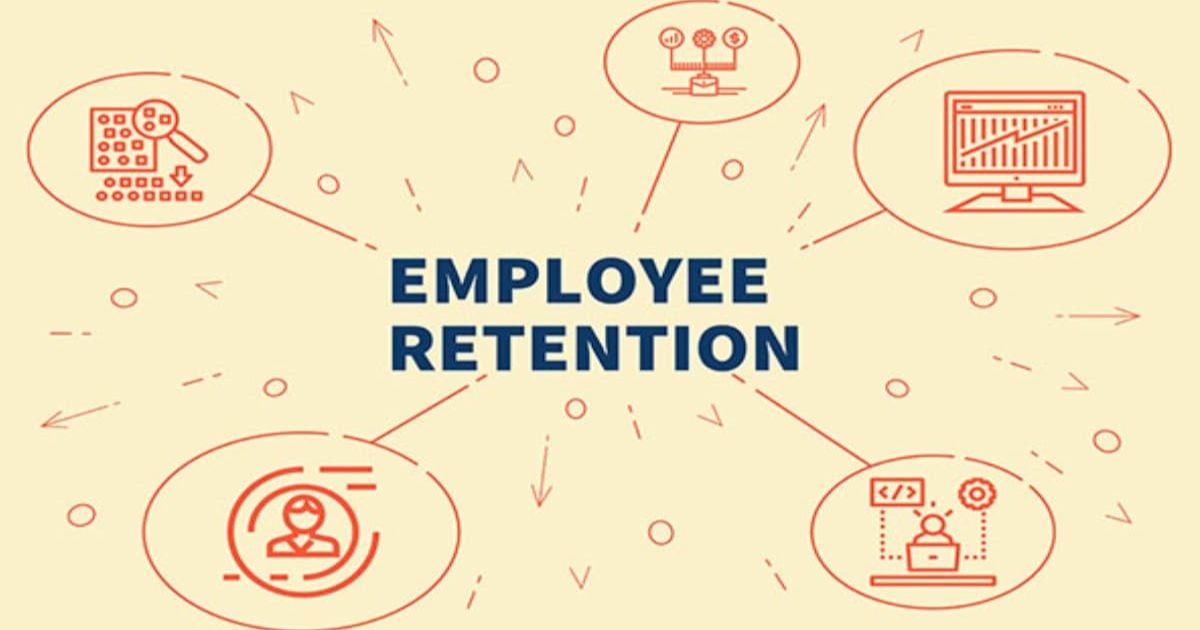Employee retention is crucial for any organization looking to maintain a stable and productive workforce. It’s all about keeping your employees happy, engaged, and committed to the company. When employee retention is high, businesses benefit from lower turnover rates, saving time and money on hiring and training new staff.
In today’s competitive job market, focusing on employee retention is more important than ever. Companies that prioritize retention create a work environment where people want to stay and grow. By implementing strategies that promote job satisfaction, loyalty, and professional development, organizations can ensure they retain their top talent and drive long-term success.
- Talent Engagement: Fostering employee involvement and growth opportunities directly improves employee retention.
- Workforce Commitment: A committed workforce leads to higher dedication and longer-term retention.
- Employee Loyalty: Loyalty is built through positive culture, career development, and recognition, strengthening retention.
- Staff Satisfaction: Prioritizing satisfaction through benefits and open communication boosts employee retention.
- Team Stability: Stable teams enhance collaboration, trust, and long-term retention.
- Workplace Culture: A supportive, inclusive culture plays a crucial role in retaining employees.
- Staff Retention Strategies: Effective retention strategies, such as development and recognition programs, reduce turnover.
Talent engagement is crucial for driving employee retention within an organization. By actively involving employees in their work, companies foster a sense of purpose and enthusiasm. When employees feel valued, they are more likely to stay, reducing turnover rates. Prioritizing engagement boosts morale, ensuring long-term success and employee retention.
Effective talent engagement practices, such as offering growth opportunities and recognizing achievements, significantly impact employee retention. Engaged employees are more invested in the company’s success, feeling connected to its mission. This emotional connection drives loyalty, reducing the risk of valuable employees leaving. A culture of engagement ultimately strengthens employee retention rates.
Organizations focusing on talent engagement often see a direct correlation with increased productivity and reduced turnover. By providing continuous development opportunities and fostering open communication, companies build a loyal workforce. When employees feel they have room to grow, they are more committed, resulting in better overall employee retention in the long run.

Workforce commitment plays a key role in improving employee retention. When employees are committed to their roles, they show more dedication and enthusiasm for their tasks. Committed employees are less likely to leave, fostering long-term stability. Companies that nurture this commitment see significant gains in both performance and retention.
Employees who feel a strong sense of commitment are more likely to remain loyal to their organization. Offering opportunities for career growth and aligning employees’ goals with company objectives enhances this commitment. A committed workforce directly contributes to a higher level of employee retention, ensuring stability and continuity in operations.
Workforce commitment is built through strong leadership, clear expectations, and employee recognition. When employees feel respected and empowered, they develop a deep sense of loyalty. This loyalty is reflected in their ongoing commitment to the company, leading to improved employee retention rates and reduced turnover.
Employee loyalty is a significant factor in enhancing employee retention within an organization. Loyal employees stay committed to their company’s success and often act as brand ambassadors. Their dedication not only boosts productivity but also fosters a stable work environment, making it easier for the company to retain top talent.
Loyalty among employees is cultivated by creating a positive work culture, offering competitive compensation, and recognizing achievements. When employees feel valued, they are less likely to seek other opportunities. Fostering employee loyalty is directly linked to improved employee retention, helping organizations maintain a dedicated and motivated workforce.
Building employee loyalty is essential for reducing turnover. Organizations that offer career development, work-life balance, and opportunities for advancement strengthen employee loyalty. This results in a workforce that feels invested in the company’s success, significantly improving employee retention and ensuring long-term organizational growth.
Staff satisfaction is directly related to employee retention. When employees are satisfied with their roles, work environment, and leadership, they are more likely to stay with the company. Companies that prioritize employee satisfaction foster a culture of loyalty, reducing turnover and ensuring a stable, committed workforce for the long term.
High levels of staff satisfaction are achieved through competitive benefits, recognition, and career development opportunities. Satisfied employees feel valued, which strengthens their connection to the company. This connection leads to improved employee retention, as happy employees are more likely to stay and contribute positively to the organization’s success.
Regular feedback and open communication are key components of staff satisfaction. By listening to employees and addressing their concerns, companies demonstrate a commitment to their well-being. This proactive approach to maintaining staff satisfaction contributes to higher employee retention rates, ensuring the organization’s long-term stability and success.
Team stability is a critical factor in employee retention. Stable teams foster strong relationships and improve collaboration, making it easier to achieve organizational goals. Employees who feel part of a cohesive team are more likely to stay with the company. Team stability is a key driver of both productivity and retention.
When teams remain intact over time, they build trust and efficiency, leading to better performance. Stable teams face fewer disruptions, and the sense of belonging enhances employee retention. Companies that prioritize team stability create an environment where collaboration thrives, ultimately improving overall employee retention and organizational success.
Investing in team stability involves nurturing a supportive work culture and ensuring that team members have the tools and resources they need to succeed. Companies that prioritize stability experience fewer turnover issues and higher retention rates. This stability contributes to a motivated workforce that is focused on achieving long-term goals.
Employee connection is vital for maintaining high levels of employee retention. When employees feel connected to their coworkers and the organization, they are more likely to stay engaged and loyal. Strong relationships at work promote collaboration, reducing the likelihood of turnover and creating a stable, productive workforce.
To strengthen employee connection, companies can encourage team-building activities, open communication, and mentorship programs. These initiatives help employees build strong bonds with one another, enhancing their overall work experience. As a result, employees are more likely to remain with the company, improving employee retention and fostering a positive work environment.
Fostering strong employee connection also leads to increased job satisfaction, as employees who feel connected are more likely to be engaged in their work. This deeper connection with colleagues and leadership helps reduce feelings of isolation and dissatisfaction, further enhancing employee retention across the organization.

A positive workplace culture plays a crucial role in employee retention. When employees align with the company’s values and work environment, they are more likely to stay. Organizations that prioritize inclusivity, respect, and collaboration create a culture where employees feel valued, leading to stronger employee retention rates.
Workplace culture shapes how employees interact with one another and how they view their roles. Companies with a supportive, empowering culture attract and retain top talent. By fostering a positive culture that promotes employee well-being and growth, businesses can significantly improve employee retention and reduce turnover.
Strong workplace culture is built through leadership commitment, clear communication, and recognition of employee contributions. When employees feel their voices are heard and their efforts are appreciated, they are more likely to remain loyal to the organization. This cultural investment strengthens employee retention and ensures long-term organizational success.
Talent preservation is essential for improving employee retention. Organizations that invest in their employees’ growth and development demonstrate a commitment to preserving talent. By offering training, mentorship, and career advancement opportunities, companies can maintain a skilled workforce, ensuring high levels of employee retention.
Preserving talent requires a focus on employee satisfaction, engagement, and career development. When employees see opportunities for growth within the organization, they are more likely to stay. This long-term approach to talent management helps retain top performers and ensures the company’s continued success in the competitive job market.
Organizations that prioritize talent preservation often experience lower turnover rates and better employee retention. By valuing employees’ contributions and providing a clear path for advancement, companies build a loyal and motivated workforce. This focus on preservation leads to a stable, high-performing team that contributes to long-term success.
Read More: 14 Other Ways to Say “Hustle”
Effective staff retention strategies are crucial for maintaining a stable and committed workforce. Offering competitive compensation, career development opportunities, and a positive work environment all contribute to employee retention. By focusing on these areas, organizations can reduce turnover and ensure that their top talent stays with the company.
Regular performance feedback is another key aspect of retention strategies. When employees understand their strengths and areas for improvement, they feel more invested in their roles. Providing clear career paths and growth opportunities ensures that employees stay motivated, ultimately contributing to higher employee retention and lower turnover rates.
Organizations that implement comprehensive staff retention strategies can effectively retain talent, reducing the need for constant recruitment. By focusing on employee satisfaction, recognition, and development, companies create an environment where employees feel valued and motivated to stay. This proactive approach to retention leads to long-term success.
Employee engagement initiatives are essential for boosting employee retention. By implementing programs that foster connection, collaboration, and recognition, companies create an environment where employees feel valued. Engaged employees are more likely to stay with the organization, reducing turnover and enhancing overall productivity.
One of the most effective engagement initiatives is offering opportunities for skill development. When employees can enhance their abilities, they feel more fulfilled in their roles. Engagement initiatives that prioritize employee growth and recognition lead to higher job satisfaction, which directly improves employee retention and strengthens the company’s workforce.
Surveying employees regularly and acting on their feedback is another valuable engagement initiative. By showing employees that their input matters, organizations can build trust and foster loyalty. This kind of proactive engagement is key to ensuring high employee retention and a positive, thriving work culture.
Workforce continuity plays a vital role in maintaining employee retention. By planning for the long-term needs of the organization, companies can ensure they have the necessary talent to meet evolving challenges. A focus on workforce continuity helps organizations reduce turnover and maintain a stable, committed workforce.
Effective workforce planning involves identifying skills gaps and providing ongoing training to employees. Companies that invest in the development of their teams are better equipped to maintain continuity. This strategy not only reduces turnover but also helps organizations adapt to change while retaining top talent, boosting employee retention in the process.
Workforce continuity is further enhanced by fostering a positive, supportive work environment. When employees feel their contributions are valued and their needs are met, they are more likely to stay. This approach to continuity ensures that companies retain key talent and maintain a stable workforce that can meet future demands.

Commitment to employees is a cornerstone of employee retention. When organizations show that they care about their employees’ well-being and growth, they foster a sense of loyalty. This commitment is reflected in increased job satisfaction, higher engagement, and, ultimately, stronger employee retention rates.
Companies that prioritize employee commitment create a positive work environment, where employees feel supported and valued. Offering competitive benefits, career advancement opportunities, and recognition ensures employees remain loyal. By demonstrating a long-term commitment to their workforce, companies can improve employee retention and reduce turnover rates.
When employees feel that their organization is genuinely committed to them, they are more likely to stay. This commitment creates a sense of trust, leading to greater job satisfaction and loyalty. As a result, organizations benefit from reduced turnover and a dedicated workforce, ultimately enhancing employee retention.
Talent sustainability is key to maintaining high employee retention rates. Organizations that invest in continuous development, mentorship, and skill-building ensure that their workforce remains adaptable and motivated. This long-term approach to talent management not only attracts top talent but also keeps them engaged, reducing the likelihood of turnover.
By focusing on talent sustainability, companies build a dynamic workforce capable of meeting future challenges. Providing ongoing training and development opportunities helps employees feel empowered and valued. This, in turn, boosts employee retention, as employees are more likely to stay with an organization that invests in their growth.
Talent sustainability also includes offering a healthy work-life balance and recognition for contributions. Organizations that promote these values demonstrate a commitment to their employees’ well-being. This approach strengthens employee retention, ensuring that the company retains its most valuable assets: its employees.
In conclusion, employee retention is vital for the success of any business. When companies focus on employee retention, they build a strong and loyal workforce. By offering support, growth opportunities, and a positive work environment, organizations can keep their employees happy and motivated.
Employee retention strategies must be a priority for every organization. The more attention companies give to employee retention, the better their chances of maintaining a skilled and dedicated team. In the end, focusing on employee retention leads to long-term success and a thriving workplace. Simply put, happy and committed employees are key to a company’s future.

Grammarbeam is a smart language assistant built for clarity, creativity, and precision. From polishing grammar to exploring rich synonyms and refining sentence structure, Grammarbeam is your go-to tool for powerful communication. If you’re writing for school, business, or just for fun — let your words shine with Grammarbeam.

